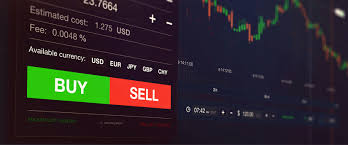
The Ultimate Guide to Forex Currency Trading
Forex currency trading is one of the most popular financial markets globally, where trillions of dollars are exchanged daily. This market operates 24 hours a day, allowing traders from all around the world to engage in buying and selling currencies. If you’re interested in Forex, consider checking out forex currency trading Forex Brokers in South Africa, as they can offer valuable insights and platforms for trading.
Understanding Forex Trading Basics
At its core, Forex trading involves exchanging one currency for another, with the aim of making a profit. The key components include currency pairs, pips, margins, and leverage. Currency pairs consist of a base currency and a quote currency. For example, if you’re trading the EUR/USD pair, the Euro is the base currency, and the US Dollar is the quote currency. Traders speculate on whether the base currency will strengthen or weaken against the quote currency.
What are Pips?
A pip, or percentage in point, is the smallest price move that a given exchange rate can make based on market convention. In most currency pairs, a pip is a movement in the fourth decimal place (e.g., for the EUR/USD from 1.1000 to 1.1001). Understanding this concept is crucial as it forms the basis for calculating profits and losses in trades. Some currency pairs, like the Japanese Yen, use the second decimal point.
Leverage and Margin in Forex Trading
Leverage is a major component of Forex trading that allows traders to control larger positions with a smaller amount of capital. For instance, if a broker offers a leverage of 100:1, a trader can control $10,000 with just $100. This can amplify profits but also increases the risk of significant losses. Margin refers to the amount of money required to open a leveraged position. It’s crucial to manage these aspects carefully to avoid margin calls, where a broker demands additional funds to maintain open trades.
Forex Trading Strategies
To navigate the Forex market successfully, traders employ various strategies, including:
- Scalping: This involves making numerous trades throughout the day to take advantage of small price movements, often holding positions for just a few minutes.
- Day Trading: Day traders open and close positions within the same trading day, aiming to profit from intraday price movements.
- Swing Trading: Swing traders hold positions for several days or weeks, aiming to capitalize on larger price shifts.
- Position Trading: This long-term strategy involves holding positions for weeks, months, or even years, based on fundamental analysis.

The Importance of Analysis in Forex Trading
Successful Forex trading relies heavily on analysis. Traders primarily use two types of analysis:
- Fundamental Analysis: This involves evaluating economic indicators, interest rates, political stability, and overall economic performance of a country to forecast currency movements. Events such as employment reports, inflation rates, and central bank meetings significantly influence currency values.
- Technical Analysis: This refers to studying historical price charts and patterns to predict future movements. Traders use various tools like moving averages, trend lines, and indicators like the RSI or MACD to identify potential entry and exit points.
Risk Management in Forex Trading
Risk management is vital in Forex trading to protect your capital. Here are some essential tips:
- Set a Stop-Loss: Always use stop-loss orders to limit potential losses on trades.
- Limit Exposure: Avoid risking more than a small percentage of your capital on a single trade.
- Diversify: Don’t put all your capital into one trade; diversify your portfolio to spread risk.
- Keep Emotions in Check: Developing and following a trading plan helps to avoid impulsive decisions driven by fear or greed.
The Role of Forex Brokers
Choosing the right Forex broker is crucial for trading success. Brokers provide traders with access to the market, trading platforms, educational resources, and customer support. Key factors to consider when selecting a broker include:
- Regulation: Opt for brokers that are regulated by reputable financial authorities to ensure a level of safety and transparency.
- Trading Fees: Be aware of spreads, commissions, and any potential hidden fees that may affect profitability.
- Trading Platform: Familiarity and comfort with the trading platform can enhance execution speed and trade management.
- Customer Service: Reliable and accessible customer support can be invaluable, especially in times of market volatility.
Forex Trading Resources and Education
Continuous learning is vital for success in Forex trading. Many resources are available, including online courses, webinars, eBooks, and forums where traders share experiences and strategies. Furthermore, demo accounts allow novice traders to practice strategies without risking real money, providing a safe environment to refine skills and build confidence.
Conclusion
Forex currency trading can be a rewarding endeavor but comes with various risks and challenges. By understanding the basics, employing effective strategies, managing risks, and continuously seeking knowledge, traders can improve their odds of success in this dynamic market. With determination and practice, anyone can become a proficient Forex trader.
